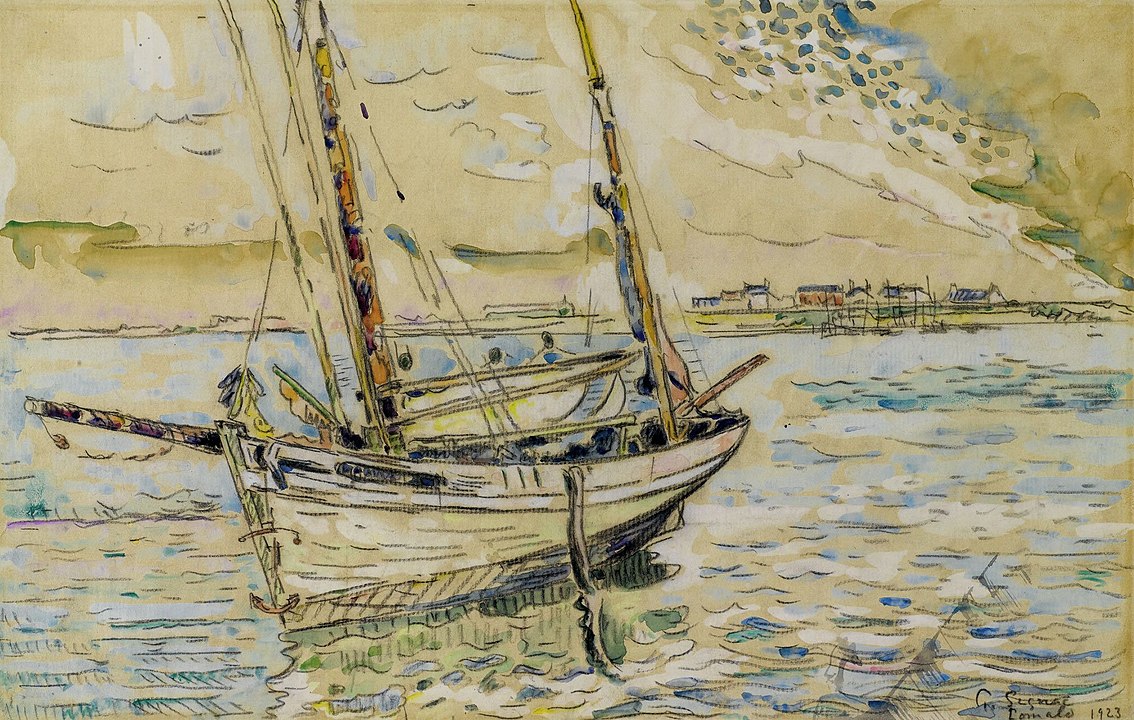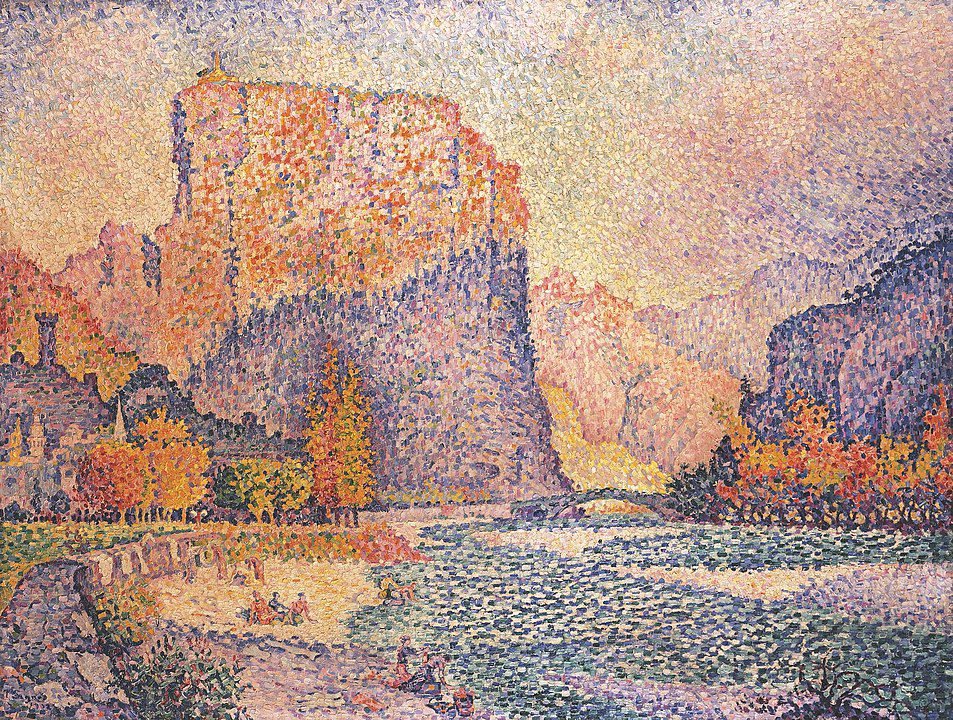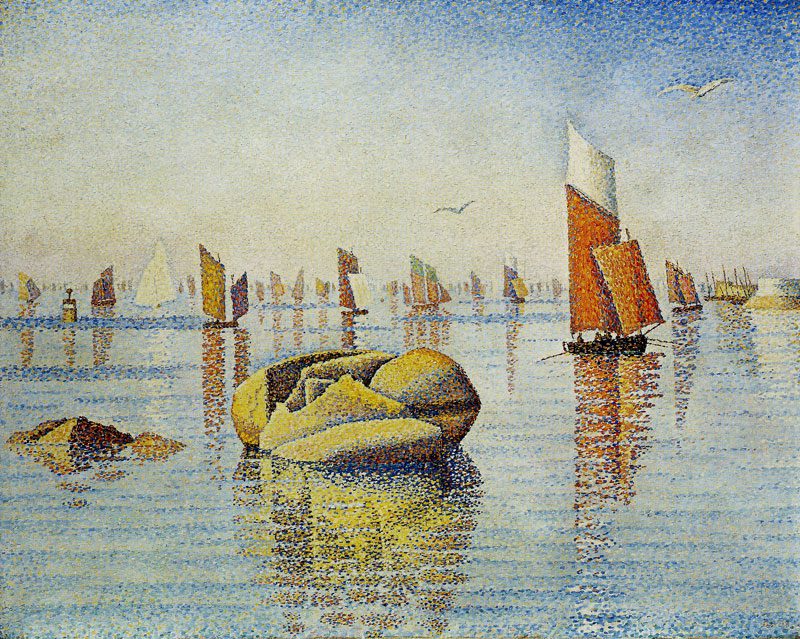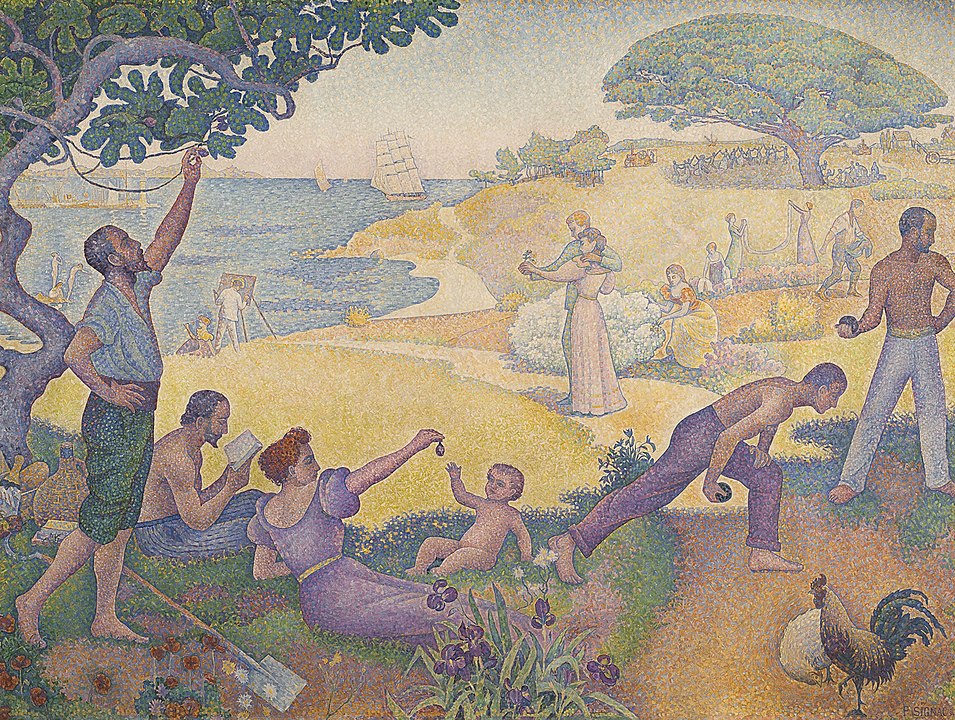Wisdom from Paul Signac in 7 Facts and 11 Beautiful Paintings
French painter Paul Signac is known for helping develop the pointillist style. Learn life-changing lessons from the pioneer of Neo-Impressionism in 7 facts and 11 beautiful paintings: 7 from Paul Signac, and 4 from Sepia Flora.

Christie’s, Public Domain on Wikimedia Commons
A Bit of History
Paul Victor Jules Signac (11 November 1863 in Paris- 15 August 1935) was a Neo-Impressionist painter. Along with Georges Seurat, they developed the pointillist style.
Among other historic events, Claude Debussy, one of the finest composers of all time, was born in 1862. Gustav Mahler, composer, and conductor was born in 1860.
In 1900 the book The Wizard of Oz was published. The first movie theatre in the United States opened in Los Angeles in 1902.
The Tour de France began in 1903. The First World War began in 1914. The Spanish Flu was in the year 1918. When writing this article, there was another pandemic in the world, the COVID-19 in 2020.
These historical facts place us on what the world looks like, now and then. It is a reminder of our momentary nature. While Signac was developing a new artistic movement, the world kept going without noticing his presence. This puts perspective on our lives.

Flickr, Public Domain, on Wikimedia Commons
Historic events as well as art masterpieces of everyday life are abstractions of our nature. When we surrender to the universe and view artistic creations with a broader perspective, we are less preoccupied with life’s tasks. Art offers us a broader interpretation.
In the following, I will introduce Paul Signac’s life more thoughtfully. One where we can learn through 7 facts and 11 beautiful paintings.
1. Inspiration Can be Anywhere
How much time do we waste during the day? I know I have lost time when I have an unfulfilling feeling of boredom. For example, when I read the news, or when I look at new collections from some clothing brands.
On the contrary, when I watch a meaningful television series or play an art game, I feel motivated. It is still a time when I am not working, but it doesn’t leave me unfulfilled. Don’t always think about doing work-related tasks. Pursue your passions and don’t harm yourself with meaningless actions. We should pursuit activities and lessons that nourish our minds and souls.

Public Domain, on Wikimedia Commons
Paul Signac was going to be an architect before attending a Monet’s exhibit. With an open mind, he fell in love with paintings and changed his career. We learn from him that depending on how we experience life’s circumstances, we might gain valuable insights. Also, he loved sailing and every trip was new scenery and an opportunity for inspiration. A life with art is a slow life. Admire nature, and admire what constitutes your world.
Everywhere we are there is an opportunity. Let your imagination and instinct guide you sometimes. It is always possible to engage in inspiring activities.
2. Rapid Sketches by Paul Signac
When we sketch we develop different areas of our brains. Sketching helps our coordination and observation skills. Start noticing details and carry a notebook to be more aware. Gain focus and start paying attention to details. Develop this habit that can even improve your confidence.

Paul Signac frequently had sailing trips around France. From these trips, we can see amazing colorful watercolors, sketched rapidly from nature. Also, there are notebooks where Signac mentions in detail his observations.
Opposite a white palace, with pink line, harmony in pink, with green blinds… Communal Palace.. retouching Gozzoli virgin fresco…blue background…
Paul Signac

3. Divisionism: A Way to Find Organization
Paul Signac was highly influenced by Georges Seurat. Especially, by his methodical working methods. Finding structure and organization was something Signac valued. With divisionism, he pursued a method of observation and sentiment. He was able to innovate by creating a new artistic movement.
This method consisted of painting with individual dots, thus separating the colors within the objects. The dots will interact optically, but not in the canvas. The white color of the canvas had a shimmering effect. This innovation was an important insight for later artists. It was a step towards abstraction.
There are two main ideas we can learn from divisionism. First, we can divide our troubles and work on them separately. Everything seems overwhelming when we try to solve everything at once. We can write and as Paul Signac teaches us with optics, we can visualize a better outcome.
Second, a bit of theory and structure goes a long way. We can discover new paths and understandings of our knowledge by adding stimulating research.
Art is a creation of a higher order than a copy of nature which is governed by chance…. By the elimination of all muddy colors, by the exclusive use of optical mixture of pure colors, by a methodical divisionism and a strict observation of the scientific theory of colors, the neo-impressionists insures a maximum of luminosity, of color intensity, and of harmony- a result that has never yet been obtained.
Paul Signac

Public Domain, on Wikimedia Commons
4. Learn From Pointillism: Patience
This journey of incorporating art into my everyday life has taught me to be patient. I enjoy so much painting and drawing, but I want to get results quickly. While reading about Paul Signac, I was inspired to paint using the pointillist aesthetic. Believe me, it requires a lot of patience and time. The results? A clear mind, an inspired soul, and a stiff neck.
Learn to be patient and to cherish life’s experiences to become an astute and insightful person. Every dot represents every day of our lives. Every bit of wisdom and every day adds up to the whole picture. A blue day with a bright yellow day, make up greener pastures. It’s about our insight and the way we treasure who we become thanks to every circumstance.

5. Paul Signac: Music and Frequencies
Something I truly admire about Paul Signac is his connection between music and painting. Music is composed by notes or frequencies, so is the way we perceive colors. Colors are electromagnetic radiations characterized by their wavelength or frequency.
Signac studied the theory of colors. As mentioned before, he divided the colors within objects. Divisionists believed that optical mixing would produce more vibrant colors than mixing pigments. Each color was valued by its wavelength to compose a visual symphony.
This is a direct connection with music. The colors Paul Signac chose for a painting were a performance because the spectator was part of the painting. After all, with divisionism, we are the ones that mix the pigments in our heads. Paul Signac was interested in the vibration of colors, as one distinguishes the vibration of individual sounds.
Many of his paintings were numbered like musicians did, with opus numbers. Beyond that, he made a series of paintings, like movements within a musical composition. Musical pieces are named many times by the tempo they are played in. Paul Signac also named his paintings according to this notion. Slow boats on the sea with low-frequency colors are a perfect larghetto musical composition.

Public Domain on Wikimedia Commons
The art of the colorist has in some ways elements of mathematics and music.
Paul Signac
Music can be part of your life for expression and well-being. Learn from Paul Signac to admire and blend different forms of expression. Your admiration of the arts and of expressions would be more insightful.
6. Wisdom from Paul Signac
Fight for what you believe in, but do it wisely. Innovate and inspire others to do the same. There is never enough time to learn. You learn in your life when maybe it’s already too late. It doesn’t matter, you are a better person and that is what counts.

Regrets? Well, many. I think we all have them. But it is not wise to think of them as regrets, rather as teachings. What can we learn from that time? Did you think you waste your time? Why is that? What did you learn from it?
The anarchist painter is not the one who will create anarchist pictures, but the one who will fight with all his individuality against official conventions.
Paul Signac

Public Domain, on Wikimedia Commons
Stop political campaigns, stop posting happy pictures of your life. Let’s be wise together, let’s look at art paintings and learn from them.
Look at In the Time of Harmony. Here you can be part of a musical experience, dancing to the sound of music. We are all immersed in something. It can be arts, or it can be the way we are manipulated by the media. You choose what matters and what is valuable.
7. Hope
The golden age has not passed; it lies in the future.
Paul Signac
I am a self-taught artist and I recently began drawing and painting. It is an absolute joy to notice details, to express with visual imagery. Every day I learn, and I become aware of the immense abilities that one can develop. There is always hope for the future because every day we are wiser than the day before.

We can admire every painting and dream with them. A life with art is a life with hope. Artists are a companion both for uncertain and joyful times.

